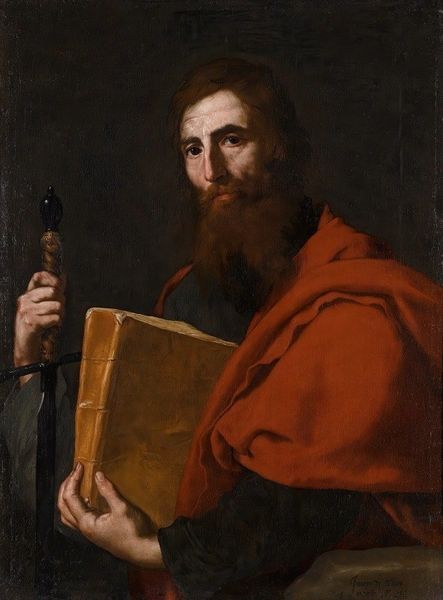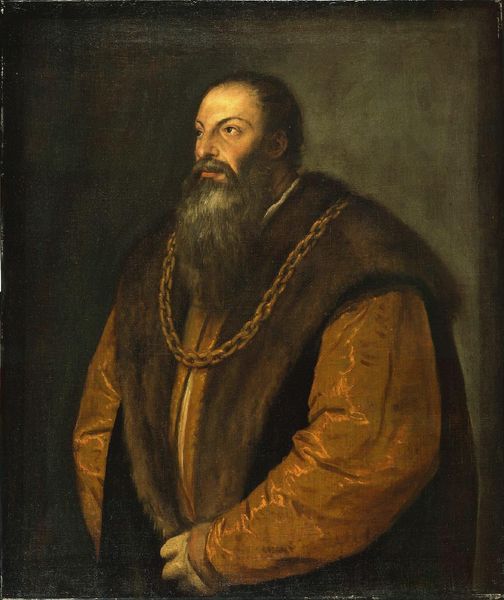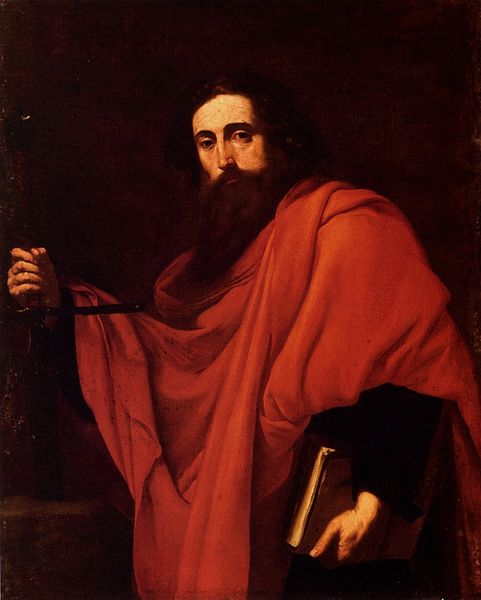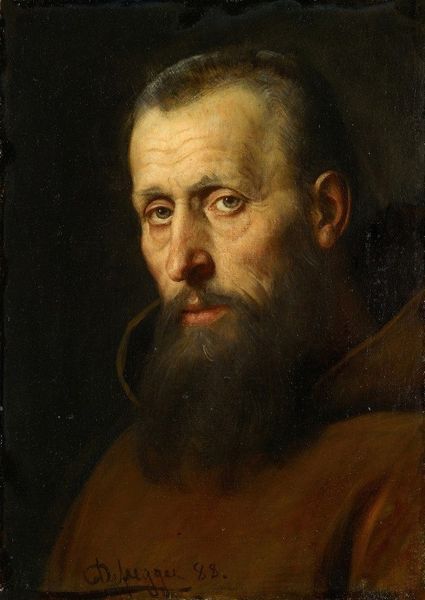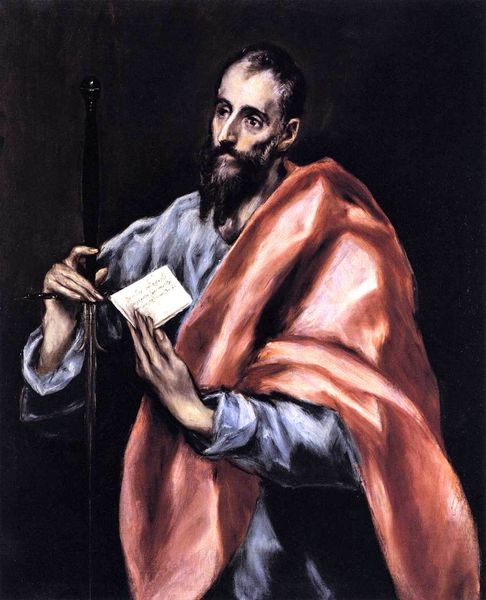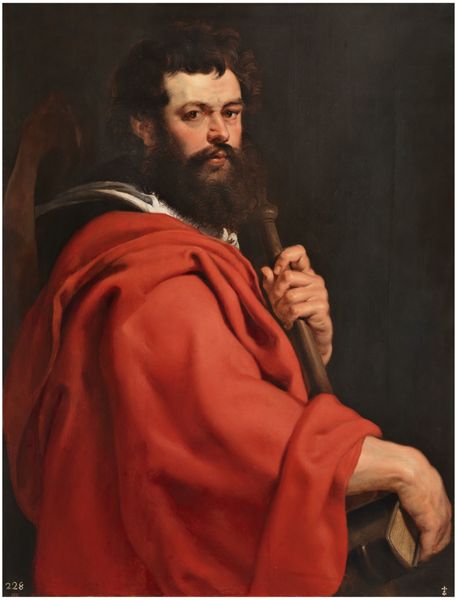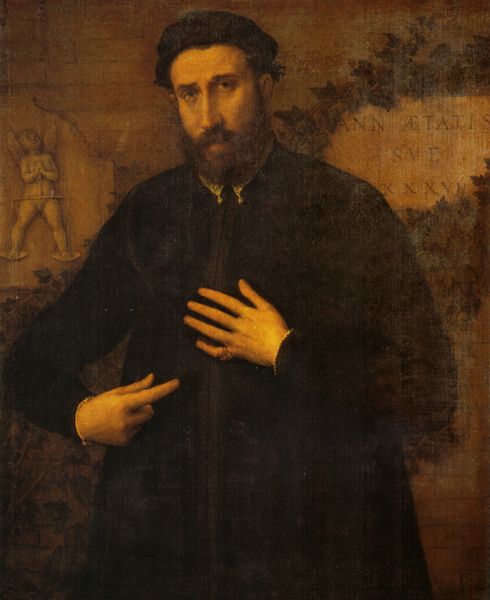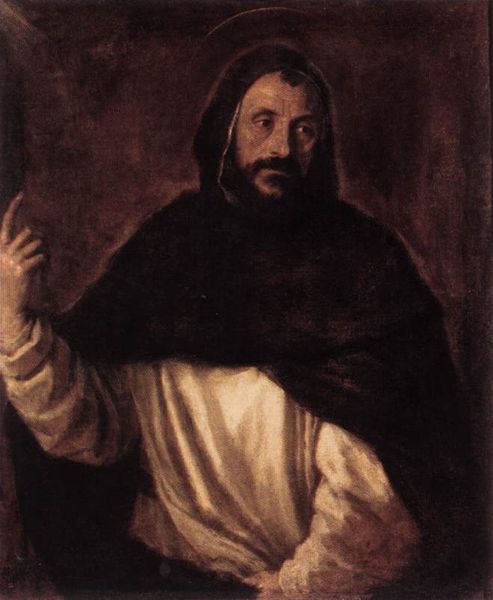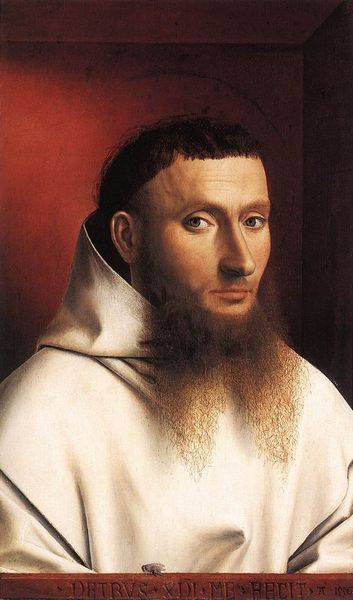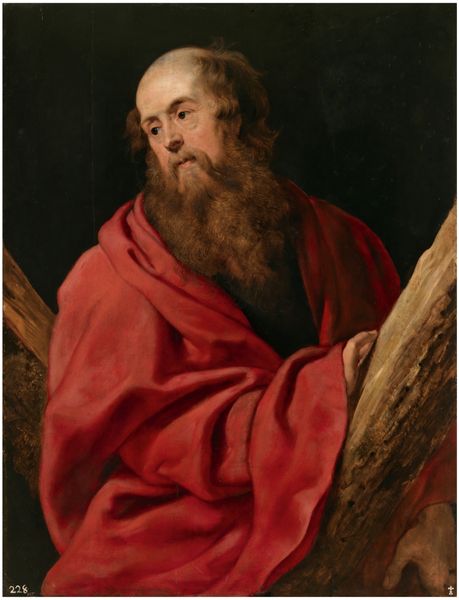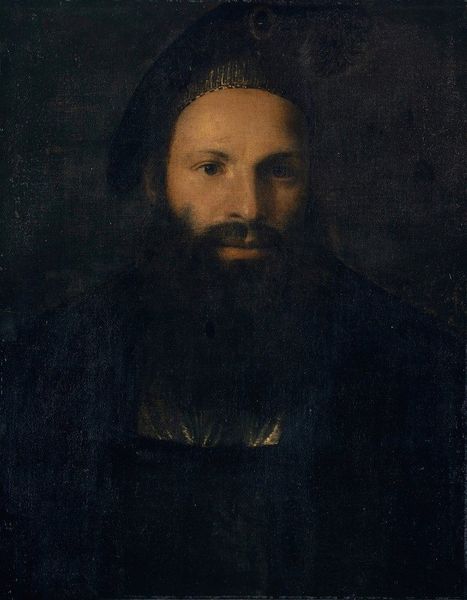
Cardinal Rodolfo Pio 1550
0:00
0:00
painting, oil-paint
#
portrait
#
painting
#
oil-paint
#
mannerism
#
history-painting
#
academic-art
#
italian-renaissance
Copyright: Public domain
Curator: Welcome. Here we see Francesco Salviati’s 1550 oil on panel painting, "Cardinal Rodolfo Pio," a powerful portrait housed in the Kunsthistorisches Museum in Vienna. What strikes you most about this work? Editor: Immediately, the intensity of the red against that somber background. It’s a stark announcement of power, isn't it? Almost theatrical. You feel like you're encountering not just a man, but an institution. Curator: Indeed, the Mannerist style lends itself to such drama. Consider the carefully elongated face, the almost sculptural rendering of the beard. And the gaze – piercing, direct, holding the viewer captive. Editor: That crimson robe practically screams wealth and influence, but I am drawn to consider the specific historical and social power held within the Catholic Church, especially during the mid-16th century when this portrait was created. Rodolfo Pio was clearly an influential figure to be depicted with such visual strength. The patriarchy made visible, literally in pigment. Curator: Absolutely, the formal elements serve a definite purpose, but note how the texture of the oil paint itself contributes. The delicate highlights on the fabric create a sumptuous surface, while the restrained palette focuses attention on the Cardinal’s presence. There is also incredible anatomical awareness. Note the details in his hands. Editor: One cannot divorce that technique from the role he played in a system. He lived in a time of social upheaval in Europe because of The Reformation; these luxurious visual markers helped signal religious authority in an age of reform. Even down to that severe, almost monastic haircut. Curator: The painting’s power lies precisely in its formal construction: the harmony of color, the carefully balanced composition, and the masterful execution. The use of chiaroscuro here directs your attention. Editor: Of course, these works were meant to visually impress, not just act as individual works of art. How did the policies this man upheld affect the larger society of his time? Art becomes not merely something beautiful, but an historical record to unpack. Curator: Perhaps in its restraint, “Cardinal Rodolfo Pio” reveals a great deal about its sitter—a sense of discipline and self-possession reflected in Salviati’s meticulous brushwork. Editor: And hopefully leads viewers to examine the relationship between power, image, and history.
Comments
No comments
Be the first to comment and join the conversation on the ultimate creative platform.
